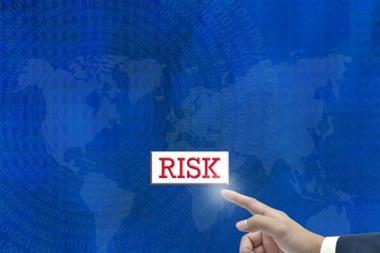Airmic board members discuss perceptions of risk and the importance of risk leadership

Airmic’s annual conference is a good opportunity for the risk community to reflect, discuss and look ahead at the upcoming challenges for the risk management profession.
During this year’s conference, StrategicRISK asked some of the association’s board members to share their thoughts on a number of risk management issues that are being discussed at the event.
The board members reflected the theme of the conference, ‘Raising the profile of risk’, but also spoke about changing perceptions towards risk management and the need for risk leadership.
A matter of perception
“Risk went from being seen as something purely negative and to be avoided, to something that must be reported, if only for someone else to deal with,” said Fujitsu risk management and secretariat director Lynda Lucas.
She added: “Nowadays, risk management is perceived as something that, if understood, enables opportunities to be taken as well as negative outcomes to be avoided.”
A positive development is that risk is gaining boardroom attention, according to former vice-president of risk management and insurance at Invensys Chris McGloin (pictured). He has seen business leaders gradually come to realise the importance of risk management for long-term success.
However, McGloin, who today steps down from the board, said risk functions are fragmented at most organisations and are often not incorporated to the risk management department.
“The necessary elements of risk management have existed in many different parts of most businesses, with operational and functional management often creating their own risk management disciplines to address their own perceived needs,” said McGloin.
Risk leadership
McGloin added that amalgamating various risk management disciplines into a coherent and efficient function at an organisation can be achieved through effective risk leadership, which was a hot topic at the conference.
“The focus on risk leadership is vital to ensure that these disparate risk processes are brought together. Businesses can thrive through effective risk-taking enabled through shared risk awareness across the organisation,” he said.
The need for risk leadership has increased at branded organisations, according to former InterContinental Hotels Group (IHG) senior vice-president risk management John Ludlow.
“Brands are typically delivered by a complex ecosystem of businesses, each with independent management, which need to be aligned, co-ordinated and inspired to deliver the outcome that the brand promises to the end users, to build and maintain trust in the brand reputation,” Ludlow said.
He added: “Risk leadership is also required to unite many aligned disciplines within risk management, because they are stronger together. Large matrix businesses are often too big for a small team to effectively network. Teams working together can better embed risk management across the business.”
How a firm builds risk leadership poses another challenge. Firms should consider creating an executive risk leader position, which would report to the board, to unify risk management disciplines, according to Tomorrow’s Risk Leadership: delivering risk resilience and business performance, developed by global business think tank Tomorrow’s Company in collaboration with Airmic and Good Governance Forum members, Chartered Institute of Management Accountants, IHG, Korn Ferry, PwC and Zurich.
The report outlines how a risk leader could provide a strategic analysis of a company’s risk exposures in relation to the firm’s business objectives. According to Xavier Mutzig, Johnson Matthey group insurance manager, the report helps risk professionals who want to become risk leaders.
“I would urge all risk managers to use the toolkit provided in this guide to score their organisation and assess its level of maturity in its approach to risk,” said Mutzig.
All risk professionals should be able to demonstrate that the primary purpose of the risk function is to ensure value creation and business performance, according to Mutzig, who said the profession should distance itself from its historical reputation of box-ticking and business blocker. To be an executive risk leader, Mutzig said risk managers should aspire to become business enablers and business partners, bringing innovative solutions to their organisation.
“One essential quality of a risk professional is the ability to improve collaboration within the organisation and with the external stakeholders. This creates a real business opportunity for the insurance industry to take advantage of a closer collaboration with its customers while supporting the risk leadership initiative in these organisations,” Mutzig added.
A risk leader must have proficient knowledge of all areas of the business to be effective in the role, said Bayer regional risk and company secretarial manager Colin Barker, who advised professionals to actively familiarise themselves with all aspects of the business.
“Immerse yourself in the business: find out what’s planned, make your valued contribution and be an active and integral part of its daily activities,” Barker said, adding: “Be a marketer, be a researcher, share their goals and ambitions, understand their needs and concerns and explain things by telling easy-to-understand stories.”
Collaboration
Executive risk leaders must also demonstrate the general leadership qualities necessary to lead diverse, multidiscipline teams and collaborate with risk teams at other firms, according to Ludlow.
“Risk professionals need to be inquisitive, collaborative, with strong influencing skills and have enough courage to do the right thing for the common good of all the brand’s stakeholders,” said Ludlow.
Lucas added: “Risk professionals have to be able to steer risk management to these levels and add value individually to take advantage of the opportunity this affords them.”
Developing risk leadership will require efforts to train the risk community with necessary leadership qualities to unite the various disciplines, broaden the general business acumen of aspiring risk professionals and demonstrate the value of empowering a risk professional to oversee, direct and maintain a company’s risk management strategy.



















No comments yet